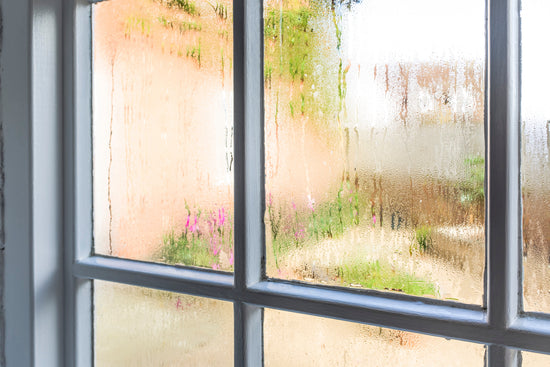Owning a vacation rental is a great way to bring in some extra income. In fact, according to a survey from HomeAway, the average vacation rental owner in the U.S. makes more than $33,000 a year in rental revenue.
But how do you price your vacation rental property to get as many bookings as possible?
This is a common source of confusion among vacation rental owners because, as it happens, there are a number of factors to take into consideration when setting your rate, including your fixed and variable costs, seasonality, competition, and more.
Read on for our top tips on how to price your vacation rental property.
Start With Your Fixed and Variable Costs
The first step when thinking about how to price your vacation rental is to look at your fixed and variable costs. This will help you set a baseline for how much you need to make each month in order to cover your expenses.
So what’s the difference between fixed and variable costs?
Fixed costs are just that — fixed. They’re expenses that you can forecast with confidence because they don’t change from month to month or year to year. This includes things like your mortgage payments, real estate taxes, insurance premiums, condo fees, and more. Basically, if it’s a consistent bill that you pay on a regular basis, consider it a fixed cost.

Variable costs, on the other hand, are expenses that change depending on a number of factors, such as your occupancy, and the time of year. Some examples include your utilities (electricity, water, AC, and heating), guest supplies, cleaning fees, and property management fees.
Since variable costs frequently change, they’re a lot more difficult to budget for than fixed costs. But in any case, it’s a good idea to come up with a ballpark amount. You can adjust how you set rates for your vacation rental after a year's worth of tracking expenses and seeing how occupancy affects variable costs.
Once you calculate all of your expenses, you’ll have an idea of the minimum rate you need to charge in order to break even. For example, if your fixed costs come to $1,100 per month, and your variable costs average $300 per month, your rental needs to bring in more than $1,400 per month in order to be profitable. Just remember, as your bookings increase, so will many of your variable costs. Be sure to factor this in to your break-even calculation and set your vacation rental rates accordingly.
Research Your Competitors' Rental Pricing
Something else you need to consider when pricing your vacation rental property is how much your competitors are charging, including both hotels and other vacation rentals. For vacation rentals, your best option is to check listing channels like Airbnb, Vrbo, and Booking.com, and take a look at the top results.
What’s important here is that you focus on rentals that are similar to yours. For example, if you own a rustic cabin in the Adirondacks, it’s best to focus on other cabins in the area as opposed to modern hotels or boutique guest homes.

A lot of these booking tools also offer the ability to use filters to narrow your search results. This is a great way to find vacation rentals that have similar features, amenities, and numbers of rooms to yours.
Once you have a good list of similar properties, make note of a few things. How do the rates compare to each other? How much do they vary? Where does your property fit in the mix? Is it bigger or smaller? You can also consider features such as furniture and decor. For example, if your rental has a queen-sized bed and others mostly have doubles and singles, that could give you a leg up on your competition price-wise.

Ultimately, what you’re trying to do here is get a sense of what the going rate is for similar vacation rental properties in your area and come up with a pricing strategy that will entice people to pick yours.
Other Pricing Considerations for Your Rental Property
While costs and competition are two of the most important factors, there are other considerations to make when settling on a rate for your vacation rental property:
Additional Fees
Have you ever noticed while browsing listings on Airbnb or Vrbo that some hosts charge additional fees for cleaning or laundry?
This is a fairly common strategy among vacation rental owners as a way to cut down on their variable costs. For example, if you charge guests a $50 cleaning fee and your cleaning service charges you $60, your variable cleaning cost has essentially dropped from $60 to $10 per booking.

Keep in mind that charging extra fees can sometimes disincentivize bookings, especially if you’re already charging a hefty per-night fee. This is actually another area where you can look to your competition for ideas. For example, if you notice that most similar vacation rentals in your area charge a cleaning fee, you can probably do the same without losing bookings.
High and Low Season
Something else to consider is your pricing during high and low seasons.
If your vacation rental is located in a region that gets a lot of seasonal tourism (like Cape Cod and parts of Florida), it’s a good idea to create two different rates for your high season and low season.

During the high season, your property will likely be in higher demand, so you can charge a more expensive per-night rate. On other hand, when it’s low season and tourism is more sparse, it’s a good idea to lower your rate to incentivize more bookings.
Third-Party Tools
Rather leave the leg work to someone else? Luckily, there are a number of tools that you can use to “recommend” a price for your vacation rental. Some listing channels (like Airbnb) do this automatically, but you can also look into other tools such as RoomPriceGenie or Beyond Pricing.
These tools generally work by compiling a ton of rental data, looking at local rates, market forecasts, and more. They then suggest rates based on where your rental is located, square-footage, number of rooms, amenities, and any other significant factors. In some cases, you can connect these tools to your listings so that they dynamically change your pricing based on changing demand patterns.
At the end of the day, as a vacation rental owner, your goal is to get as many bookings as possible, and pricing plays an important part in this. We hope this article helps you come up with a pricing strategy that suits your rental budget and goals!





